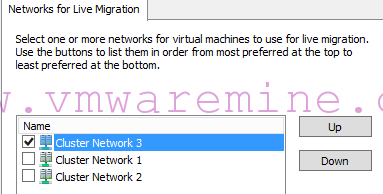Within next few weeks I will be posting how to deploy vCloud Automation Center 6.0 . However, guide will be only for simple deployment which is good for POC or for homelab deployments. Simple installation is compound out of 3 servers deployed and installed on below order:
- First component is Identity Appliance – The Identity Appliance is a pre-configured virtual appliance that provides single sign-on capabilities. It is delivered as an open virtualization format (OVF) template.
- Second component is vCloud Automation Center Appliance – The vCloud Automation Center Appliance is a pre-configured virtual appliance that deploys the vCloud Automation Center Appliance server and web console (the user portal) delivered in OVF format.
- Third component is Windows server (or more servers depends deployment method) with installed IaaS
Besides above 3 virtual machines other infrastructure components such as:
- Active Directory or OpenLDAP for authentication services
- DNS
- vCenter server with at least one of the ESXi hosts – it will be used later on as a target resources pool
My POC or homelab, you call it, environment will use:
- vCloud Identity appliance. NOTE: if you have vSphere 5.5b you can point you vCAC appliance to vCenter server SSO.
- vCloud Automation Center Appliance
- Windows 2008 R2 with installed all vCAC IIS components.
-
Distributed Execution Managers
-
Proxy agents
-
Website
-
Manager Service
-
Model Manager
-
- AD 2008 R2 Sp1 as authentication services on the same machine along with DNS and NTP services.
- On second VM vSphere 5.5 vCenter with all services:
- SSO,
- Web Client
- Inventory services
- 2 ESXi servers
- separate SQL server for both vCAC DB and vCenter DB.
- vCO appliance
- all machines will run within flat network behind PfSense firewall appliance.
Hardware requirements:
Note: in brackets are values which I used for POC deployment.
- Identity Appliance
- 1 vCPU
- 2 GB RAM
- 2 GB HDD
- vCloud Automation Center Appliance
- 2 vCPU (1 vCPU)
- 8GB RAM (4GB)
- 30GB HDD
- IaaS Components (Windows Server)
- 2 vCPU (1 vCPU)
- 8GB RAM (6GB)
- 30 GB HDD
Windows Server requirements:
- IaaS Database Server Requirements:
- These are the general requirements for the IaaS Database (SQL Server).
- TCP/IP protocol enabled for MS SQL ServerMicrosoft Distributed Transaction Coordinator Service (MS DTC) enabled on all SQL nodes in the system
- No firewalls between Database Server and the Web server or IaaS Server, or ports opened as described in Port Requirements.
- If using SQL Server Express, the SQL Server Browser service must be running.
- Prerequisite Server ConfigurationThe following components must be installed on the host before installing IaaS:
- Microsoft .NET Framework 4.5
- Microsoft PowerShell 2.0 (included with Windows Server 2008 R2 SP1 and later) or Microsoft PowerShell 3.0 on Windows Server 2012
- Microsoft Internet Information Services 7.5
IIS Components:
- Internet Information Services (IIS) modules installed
- WindowsAuthentication
- StaticContent
- DefaultDocument
- ASPNET
- ISAPIExtension
- ISAPIFilter
- IIS Authentication settings
- Windows Authentication enabled
- AnonymousAuthentication disabled
- Negotiate Provider enabled
- NTLM Provider enabled
- Windows Authentication Kernel Mode enabled
- Windows Authentication Extended Protection disabled
- IIS Windows Process Activation Service roles
- ConfigurationApi
- NetEnvironment
- ProcessModel
- WcfActivation (Windows 2008 only)
- HttpActivation
- NonHttpActivation
IaaS Manager Service
- These are the general requirements for the IaaS Manager Service.
- .NET Framework 4.5
- Microsoft PowerShell 2.0 (included with Windows Server 2008 R2 SP1
- and later) or Microsoft PowerShell 3.0 on Windows Server 2012
- SecondaryLogOnService running
- No firewalls between DEM host and Windows Server, or ports opened as described in Port Requirements.
[box type=”info”] NOTE: On IaaS server download the latest security updates for Windows but make sure .NET 4.5.1 is excluded from installation.[/box]
Simple deployment – diagram
Deployment IP and role matrix
vCloud Automation Center 6.0 series
- vCAC 6 series – Part 1 – Architecture
- vCAC 6 series – Part 2 – Prepare for deployment
- vCAC 6 series – Part 3 – Deploy VMware Identity Appliance
- vCAC 6 series – Part 4 – Deploy VMware vCAC Appliance
- vCAC 6 series – Part 5 – Installing IaaS components
- vCAC 6 series – Part 6 – Initial Configuration
- vCAC 6 series – Part 7 – Post Installation Tasks
- vCAC 6 series – Part 8 – Installing vSphere Agent
- vCAC 6 series – Part 10 – Prepare for provisioning
- vCAC 6 series – Part 11 – Create Blueprint




